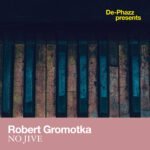
Robert Gromotka & De-Phazz – No Jive
August 8, 2025
Cristian Vivaldi – Farito
August 15, 2025Picture this: you’re sitting in a dimly lit concert hall, fingers poised over ivory keys. Do you let your hands flow into the structured elegance of neoclassical composition, or do you surrender to the spontaneous soul of jazz improvisation? For many pianists and music lovers, this isn’t an either-or question—it’s an invitation to explore two of the most captivating piano traditions that continue to evolve and intersect in fascinating ways.
The Roots Run Deep: Where These Styles Found Their Voice
Neoclassical Piano: A Return to Grace
Neoclassical piano emerged in the early 20th century as composers sought to reclaim the clarity and structure of classical traditions while embracing modern harmonic language. This movement represented a conscious departure from the emotional excess of Romanticism, instead favoring clean lines, balanced phrases, and crystalline textures.
Key pioneers like Igor Stravinsky and Paul Hindemith laid the groundwork, but it was composers such as Max Richter and Ólafur Arnalds who brought neoclassical piano into the contemporary spotlight. These artists demonstrated that classical restraint could coexist beautifully with modern sensibilities, creating music that feels both timeless and urgently present.
Solo Jazz Piano: Freedom Within Form
Solo jazz piano, meanwhile, traces its lineage through the smoky clubs and intimate venues where individual expression reigned supreme. From the stride piano of James P. Johnson through the revolutionary approaches of Bill Evans and Keith Jarrett, solo jazz piano has always been about the conversation between structure and spontaneity.
The evolution continued through artists who pushed boundaries—Brad Mehldau’s classical influences, Robert Glasper’s neo-soul integration, and Tigran Hamasyan’s genre-defying explorations all demonstrate how solo jazz piano continues to absorb and transform influences from across the musical spectrum.
The Musical DNA: Harmony and Melody Under the Microscope
Harmonic Landscapes: Structure vs. Exploration
Neoclassical harmony tends to favor diatonic progressions with carefully placed chromatic elements. The chord progressions often follow predictable patterns that create a sense of inevitable resolution—think of how a Max Richter piece builds tension through repetition and subtle harmonic shifts rather than complex chord substitutions.
Jazz harmony, by contrast, thrives on sophisticated chord extensions and unexpected substitutions. A solo jazz pianist might take a simple ii-V-I progression and transform it through altered dominants, tritone substitutions, and reharmonizations that would make a classical theorist’s head spin—but in the most delightful way.
Yet here’s where it gets interesting: modern neoclassical composers increasingly borrow jazz’s harmonic sophistication, while contemporary jazz pianists often embrace the structural clarity of classical forms.
Melodic Architecture: Crafted vs. Spontaneous
Neoclassical melodies are typically composed with architectural precision. Every note serves a purpose in the larger structure, creating melodies that feel both inevitable and surprising. The beauty lies in how these carefully crafted lines unfold, revealing their logic gradually.
Jazz melodies, especially in solo performance, emerge from the interplay between composition and improvisation. A jazz pianist might state a theme, then deconstruct and rebuild it in real-time, creating melodic variations that respond to the moment’s inspiration.
The Art of Touch: Performance Techniques That Define Each Style
Improvisation: Planned Spontaneity vs. Pure Expression
In neoclassical performance, “improvisation” often means interpretive flexibility within composed frameworks. Performers might vary dynamics, timing, or articulation, but the notes themselves remain largely fixed. The creativity lies in how these predetermined elements are shaped and colored.
Solo jazz piano, however, lives and breathes through real-time creation. Even when playing standards, jazz pianists continuously reharmonize, reinterpret, and reinvent. The left hand might establish a walking bass line while the right hand explores melodic territories that exist only in that specific performance moment.
Rhythmic Approaches: Pulse vs. Swing
Neoclassical piano typically maintains a steady, classical pulse—even when the music is rubato, there’s usually an underlying metric framework that provides stability. The rhythm serves the harmonic and melodic content, creating a foundation rather than driving the expression.
Jazz rhythm, conversely, is often the primary expressive element. The swing feel, syncopation, and rhythmic displacement don’t just support the music—they are the music. A solo jazz pianist might spend entire sections exploring rhythmic variations of a simple melodic idea.
Touch and Dynamics: Control vs. Conversation
The neoclassical approach to touch and dynamics emphasizes precision and control. Every dynamic marking, every articulation serves the composer’s vision. The goal is often to achieve a specific sound world with consistency and clarity.
Jazz piano touch is more conversational and responsive. Dynamics shift based on musical momentum, harmonic tension, and the performer’s emotional state. The piano becomes a partner in dialogue rather than a vehicle for predetermined expression.
Modern Fusion: Where Boundaries Dissolve
This is where labels like Klangspot Nu Classical and Klangspot Nu Jazzical become fascinating case studies in how these traditions continue to evolve and intersect.
Klangspot Nu Classical: Contemporary Neoclassical Excellence
Klangspot Nu Classical represents the modern evolution of neoclassical piano, showcasing artists who understand that classical structure doesn’t mean creative limitation. The label’s releases demonstrate how contemporary composers can honor classical traditions while speaking in distinctly modern voices.
Artists on this label often use minimalist repetition to create hypnotic soundscapes that feel both warm and classical. The music maintains neoclassical clarity while embracing contemporary production techniques and harmonic sophistication.
Klangspot Nu Jazzical: The Beautiful Hybrid
Perhaps most intriguingly, Klangspot Nu Jazzical represents something entirely new—a fusion that doesn’t compromise either tradition but instead creates a third path. This label showcases the growing movement of artists who refuse to choose between classical structure and jazz freedom.
The “Nu Jazzical” approach might feature composed sections with improvised interludes, classical forms filled with jazz harmonies, or jazz standards reimagined through neoclassical aesthetics. It’s music that speaks to listeners who appreciate both the intellectual satisfaction of classical composition and the emotional immediacy of jazz expression.
The Convergence: Why These Styles Need Each Other
What’s becoming increasingly clear is that neoclassical and solo jazz piano aren’t competing traditions—they’re complementary approaches to the same fundamental challenge: how to create meaningful musical expression at the piano.
Neoclassical piano offers structural wisdom and compositional craft that can ground even the most adventurous musical explorations. Jazz brings rhythmic vitality and harmonic sophistication that can breathe life into the most carefully constructed compositions.
The most exciting contemporary piano music often emerges from artists who understand both languages and can move fluidly between them—or better yet, create new dialects that honor both traditions while serving neither exclusively.
The Future Sounds Like Collaboration
As we look toward the future of piano music, the artificial boundaries between genres continue to dissolve. Projects like the upcoming “De-Phazz presents Octaves” album—where artists reinterpret nu-jazz classics through neoclassical and solo piano approaches—demonstrate how these styles can inform and enrich each other.
The question isn’t whether you prefer the structured beauty of neoclassical composition or the spontaneous magic of jazz improvisation. The question is: what happens when we stop choosing sides and start building bridges?
Whether you find yourself drawn to the crystalline clarity of neoclassical piano or the expressive freedom of solo jazz, remember that both traditions offer unique pathways to musical truth. And increasingly, the most compelling music emerges not from choosing one path, but from walking boldly between them.
Ready to explore these sounds yourself? Discover the cutting-edge of contemporary piano music through Klangspot Nu Classical and Klangspot Nu Jazzical — where tradition meets innovation, and boundaries become bridges.

